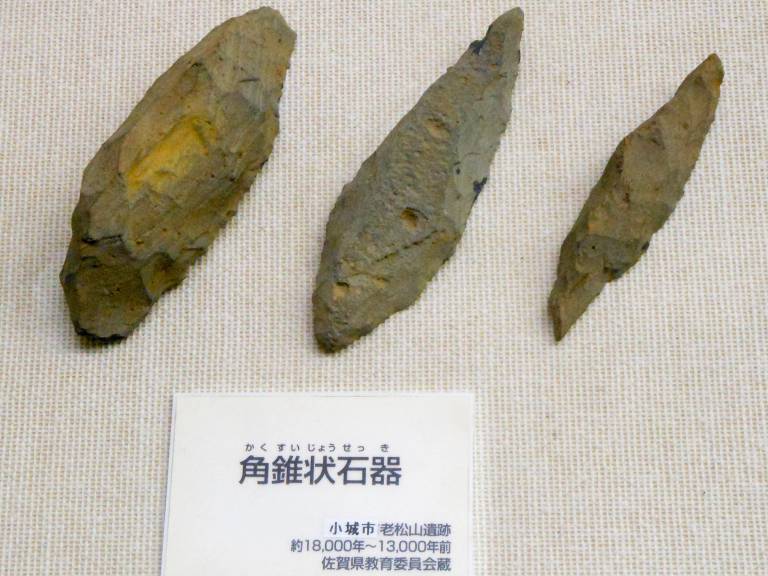Early Upper Paleolithic edge-ground stone stone tools provide criteria for identifying tool function
3 January 2024
Systematic tree-felling using a polished stone axe and/or adze developed with sedentary lifeways in Holocene environments. However, securely dated Pleistocene edge-ground stone axes/adzes have now been identified from Marine Isotope Stage 3 sites in two distant regions.

Tree-felling was an important activity for prehistoric hunter-gatherers. Wood was a widely available and useful raw material for tools, housing, other facilities, and fuel. Pleistocene wooden artifacts mainly consist of stick-shaped objects (e.g., spear, throwing stick, and digging stick) from African and European sites dated to about 300–15 ka (Thieme, 1997; Rosendahl et al., 2006; Gaspari et al., 2001; Sierralta et al., 2012; d’Errico et al., 2012; Allington-Jones, 2015; Richter and Krbetschek, 2015; Aranguren et al., 2018; Rios-Garaizar et al., 2018; Conard et al., 2020). Holocene-aged Mesolithic and Neolithic sites in various regions of the world have yielded elaborate wooden implements and features such as dwellings, wells, tracks, canoes, ladles, combs, and bows (Bocquet and Noël, 1985; Coles and Coles, 1986; Tegel et al., 2012; Piqué et al., 2015), suggesting that prehistoric society and material cultures were dramatically changed by the development of woodworking technology. Generally, the Neolithic sedentary lifeways firmly established the tree-felling technology in Holocene environments, with the importance of wood increasing with the invention of the polished stone axe, which has a durable cutting edge (Clark, 1945, 1965; Bocquet and Noël, 1985; Barkai, 2011; Yerkes et al., 2012). However, edge-ground stone axes and/or adzes (EGAXs/AZs) have now been identified from Marine Isotope Stage (MIS) 3 sites in Australia and Japan (Tsutsumi, 2012; Geneste et al., 2012; O'Connor et al., 2014; Izuho and Kaifu, 2015; Hiscock et al., 2016; Morisaki et al., 2019), and a much earlier appearance in Australia was also discussed (Clarkson et al., 2017). Evidence of early ground stone tools indicates that developed technologies in tree-felling and woodworking may have emerged earlier than previously believed.
To date, MIS 3 or possibly much older edge-ground stone tools have been recovered only from two regions, Australia and Japan, and no relevant artifacts have yet been found from the adjacent continental Asia. Isolated events suggest that these unique tools were invented soon after the arrival of Homo sapiens in the two regions (Tsutsumi, 2012; Geneste et al., 2012; Kaifu et al., 2015; Hiscock et al., 2016; Clarkson et al., 2017). Homo sapiens underwent an explosive expansion all over the globe, far beyond those of archaic hominins, in the last 50,000 years. The dispersal of Homo sapiens into new environments is marked by technological ingenuity and behavioral flexibility (Klein, 2009; Kaifu et al., 2015; Roberts and Stewart, 2018), which included the production of Pleistocene edge-ground stone tools in Australia and Japan.
Among these settings, the number of Japanese Paleolithic sites abruptly increased after 38,000 cal yr BP, with modern human skeletal remains almost simultaneously appearing in the southern islands (Ryukyu), signaling a large-scale dispersal and colonization of modern humans (Izuho and Kaifu, 2015; Sano, 2016; Morisaki et al., 2019). Edge-ground stone tools also emerged from the beginning of the Early Upper Paleolithic (EUP, ca. 38,000–30,000 cal yr BP) in Japan, which saw a significant development of deciduous broadleaf forests including beech, oak, and elm during MIS 3 (Takahara and Hayashi, 2015). Notably, from more than 500 EUP sites identified in this archipelago, more than 800 EGAXs/AZs were recovered (Fig. 1) (Hashimoto, 2006; Tsutsumi, 2012), suggesting that polished stone tools played a pivotal role in the adaptation to the temperate forest of MIS 3 and further allow for a quantitative evaluation of their functions. However, as is known from multifunctional uses in ethnographical records (Boas, 1909; Emmons, 1923; Blackwood, 1950; Godelier and Garanger, 1973; Ishige, 1978; Dickson, 1981; Stewart, 1981; Petrequin and Petrequin, 1993), the existence of EGAXs/AZs cannot be regarded as direct evidence of tree-felling. Therefore, a rigorous use-wear analysis of the Japanese EUP EGAXs/AZs and reliable interpretation criteria are required to demonstrate percussive uses on wood by EUP hunter-gatherers in this archipelago. Hence, in this paper, we performed experimental traceological studies with EGAX/AZ replicas and discussed the prospect of identifying tree-felling or wood-percussive tools based on macro- and microscopic use-wear.
Akira Iwase, Katsuhiro Sano, Junichi Nagasaki, Noriaki Otake, Masahisa Yamada
 Close
Close

